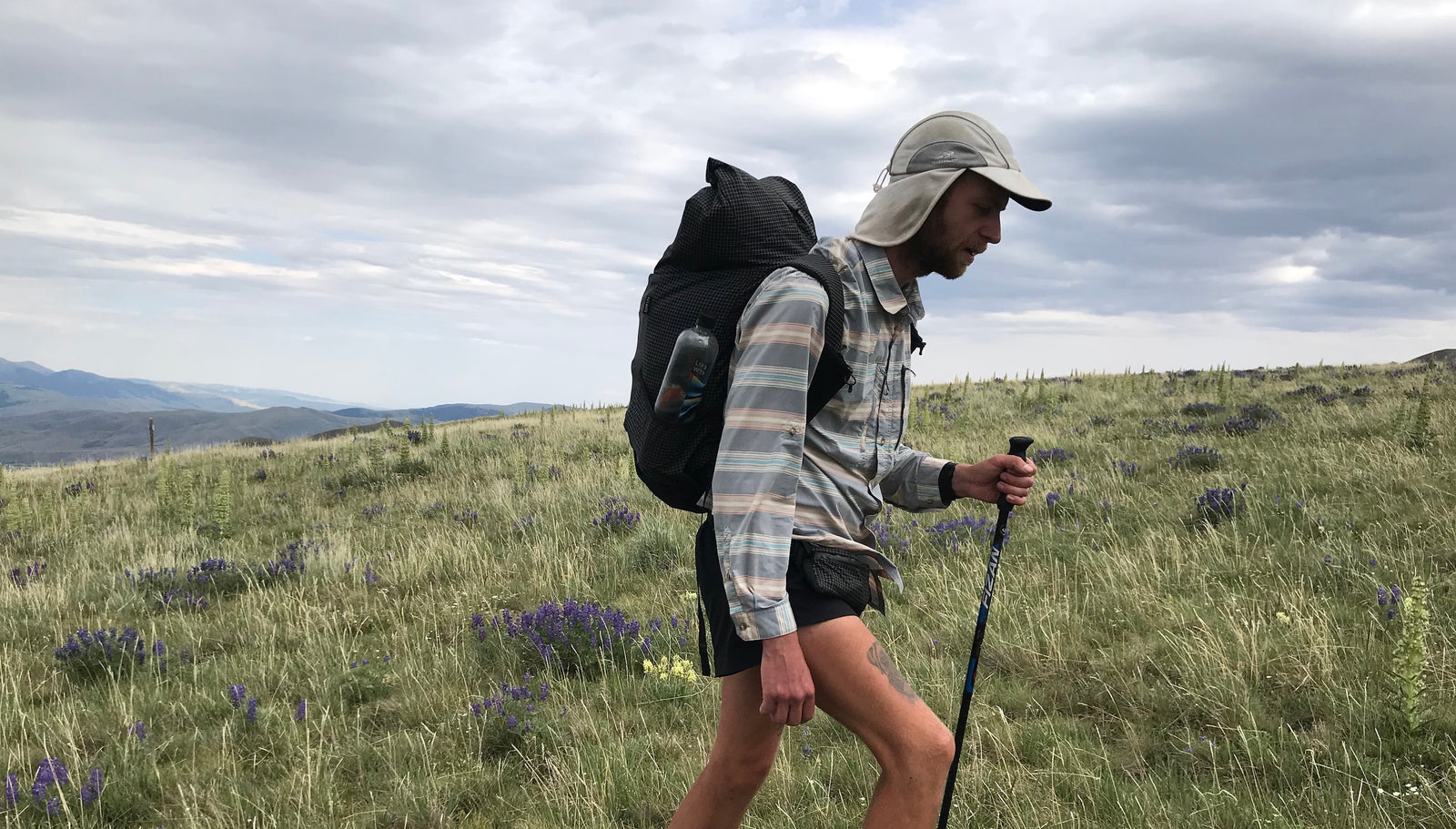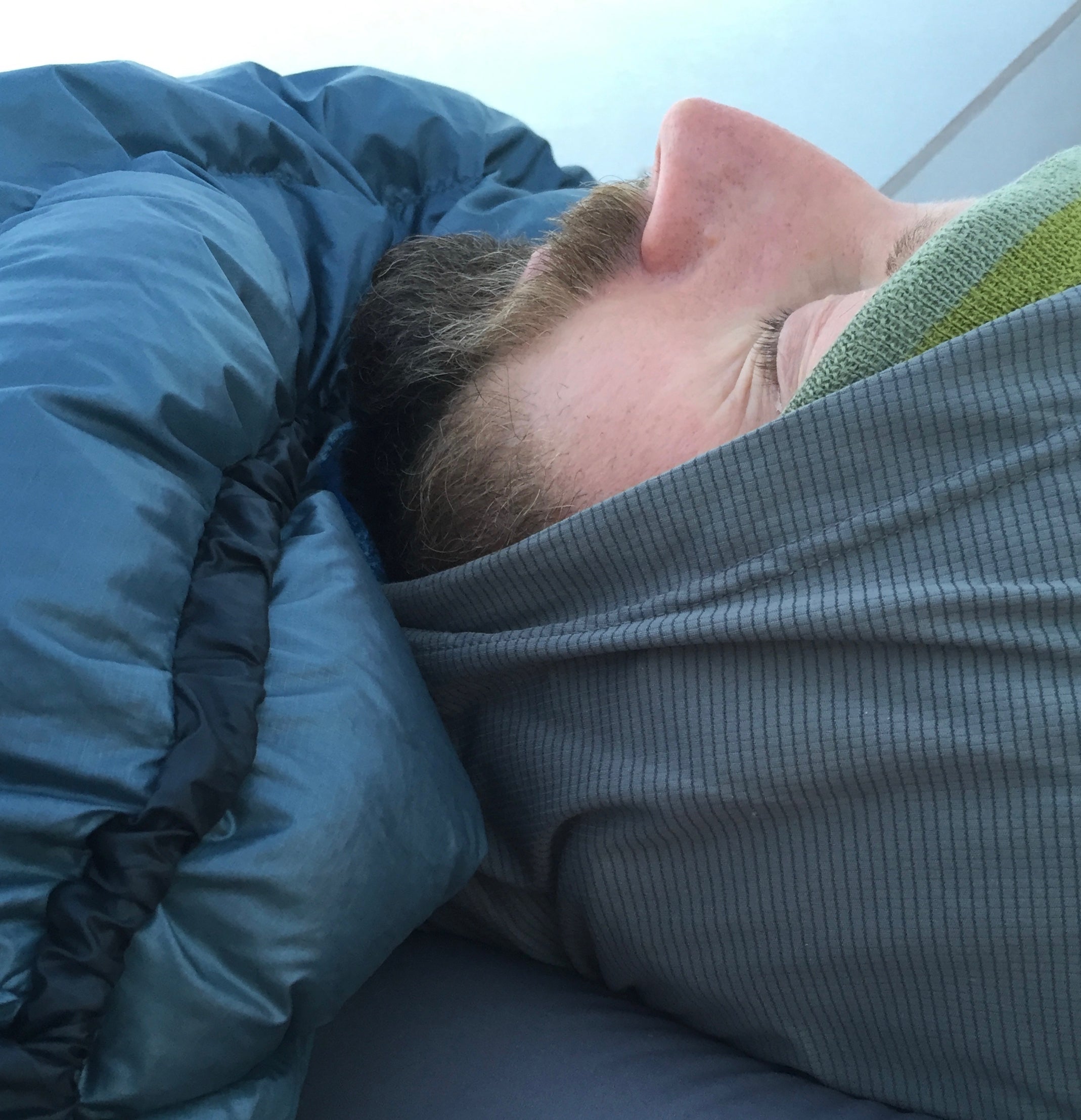Your Cart is Empty
Free Domestic Shipping Over $50 | 30 Day Returns

By Trey French
Some of the most comfortable and gratifying nights of rest for me in the backcountry have come from working with the topography and challenging elements that come with recreating in the outdoors. In the mountain west, that might be camping just below treeline in a cluster of dense pines shielded from the electric light show on a peak above—my overstuffed draft collar cinched snugly just below my chin. In the eastern US, maybe it’s taking advantage of some level ground, shelter pitched under a tree at the edge of the meadow on a pink sky night in the Green Mountains, granting me dry viewership just on the other side of a frosty, dew covered meadow. Sleeping on the lee side of a boulder listening to the howling wind above, resting on my side with a giant grin? Oh yeah! Nestled under a rock outcropping above the canyon floor away from that cold air sink? Golden.
I’m sharing 5 practices that I implement out there to maximize warmth and comfort in my Katabatic quilts.

1. Sleep away from water, Tuna Pouch
Streams, creeks, ponds, and lakes are typically in depressions, which tend to be places where cold air sinks and hangs out all night. If the chilly condensation doesn’t bother you, you may also be impeding an animal’s access for a drink, or planting yourself in a mosquito feeding zone! Moreover, these camps tend to be overused, and are likely rock solid, providing little natural insulation underneath your sleep system. One thing to keep in mind is that “dry camping” may mean carrying a little bit of extra water into camp, so plan accordingly.
2. Use a pad that’s up to the task, Corn Chip
 Admittedly, in my long trail pursuits, I have experimented with pushing just how little I can take, and building my kit back up from there. One area of exploration has been in sleeping pads. From torso length ⅛” thick pads, to plush 2-3” inflatables. Lately, it’s all inflatable for me. I use a Thermarest Neoair for most 3 season outings, and add a foam pad underneath for the real cold stuff. Other folks in the shop use pads from Exped and Nemo. Whatever brand or style you use, we recommend considering an r-value that matches what you can expect out of the quilt you’ve chosen for your respective conditions. Sometimes a trip where you will be camping on hard surfaces only, like a well-worn trail like the AT, or an established campsite-only permit hike through Glacier National Park in Montana. Soft surfaces typically offer some natural insulation, and if you can find them while adhering to LNT principles, you might be on your way to sleep perfection.
Admittedly, in my long trail pursuits, I have experimented with pushing just how little I can take, and building my kit back up from there. One area of exploration has been in sleeping pads. From torso length ⅛” thick pads, to plush 2-3” inflatables. Lately, it’s all inflatable for me. I use a Thermarest Neoair for most 3 season outings, and add a foam pad underneath for the real cold stuff. Other folks in the shop use pads from Exped and Nemo. Whatever brand or style you use, we recommend considering an r-value that matches what you can expect out of the quilt you’ve chosen for your respective conditions. Sometimes a trip where you will be camping on hard surfaces only, like a well-worn trail like the AT, or an established campsite-only permit hike through Glacier National Park in Montana. Soft surfaces typically offer some natural insulation, and if you can find them while adhering to LNT principles, you might be on your way to sleep perfection.
Also, don’t forget to really bed down (heh) by utilizing our pad attachment system. Connecting to the first, larger opening on the clips will allow more movement and a little ventilation, while securing the cord into the second, smaller opening on the attachment will lock the party down. Check out this video from 2017, with an even older sleeping pad for demonstration. Bonus, at the end of the video, there’s yet another reason to pick up some camo duct tape. Who would've thought?
3. Cinch the draft collar, Honey Waffle
 Cinch the overstuffed draft collar up to the neckline, just below your chin. With all that puff, it’s something I look forward to every evening. Though it can be tempting to pull it over our head, we can end up doing ourselves a disservice by introducing water vapor into the down from our breath, potentially causing some loss (recoverable though!) of loft if it becomes regular practice, or an all night affair. Plus, the Pertex Taffeta fabric is one the comfiest features on Katabatic quilts, and breathing into the quilt can make that liner fabric feel cold and clammy like a waterproof rain jacket in a downpour in the tropics. Down works best when it’s only regulating the heat coming from below the neckline. Ask our friend Snorkel about this : )
Cinch the overstuffed draft collar up to the neckline, just below your chin. With all that puff, it’s something I look forward to every evening. Though it can be tempting to pull it over our head, we can end up doing ourselves a disservice by introducing water vapor into the down from our breath, potentially causing some loss (recoverable though!) of loft if it becomes regular practice, or an all night affair. Plus, the Pertex Taffeta fabric is one the comfiest features on Katabatic quilts, and breathing into the quilt can make that liner fabric feel cold and clammy like a waterproof rain jacket in a downpour in the tropics. Down works best when it’s only regulating the heat coming from below the neckline. Ask our friend Snorkel about this : )
If your fleece beanie or your fuzzy hood isn’t cutting it, consider opting for a down hood to house the dome. These are separate from the quilt, and have nifty straps that you secure under your arms to keep the hood in place. So you get the benefit of full coverage while retaining that freedom of movement that quilts are known for. Plus, there’s no mummy bag hood to wake up lost in, because there’s no map for that adventure. The best thing is, you can eat your evening mashed potatoes with it on, if style matters at your camp (it does).
4. Eat something yummy before bed, Mr. Peanut Butter
 I don’t think it’s something we ponder often, but our quilts actually keep us warm by retaining the heat that we’re producing while we sleep. It’s a matter of balancing the rate that our heat migrates through the quilt into the atmosphere, so that the heat doesn’t exit faster than we can produce it. Differential cut, an efficient fit, pad attachments, draft collar—these are features that factor into performance, but the fundamental insulating property comes from the fact that it lofts, and traps our body heat. I love a chocolate protein bar smeared in some sort of nut butter after dinner (maybe a handful of peanut m&m’s, too. ;) This stuff works well with my stomach on trail, and is full of fatty calories, exactly what I want working for me overnight, burning slowly and feeding into (whoops, pun) my sleep system. If you’re carrying a burrito, or leftover pizza that you had delivered while you're scrambling to prepare for your trip the night before, that also works! Personally, my pizza never makes it to camp.
I don’t think it’s something we ponder often, but our quilts actually keep us warm by retaining the heat that we’re producing while we sleep. It’s a matter of balancing the rate that our heat migrates through the quilt into the atmosphere, so that the heat doesn’t exit faster than we can produce it. Differential cut, an efficient fit, pad attachments, draft collar—these are features that factor into performance, but the fundamental insulating property comes from the fact that it lofts, and traps our body heat. I love a chocolate protein bar smeared in some sort of nut butter after dinner (maybe a handful of peanut m&m’s, too. ;) This stuff works well with my stomach on trail, and is full of fatty calories, exactly what I want working for me overnight, burning slowly and feeding into (whoops, pun) my sleep system. If you’re carrying a burrito, or leftover pizza that you had delivered while you're scrambling to prepare for your trip the night before, that also works! Personally, my pizza never makes it to camp.
5. Layer up, Hot Pocket
This is an easy one. At minimum, unless you’re a warm sleeper, you’ll probably want a pair of lightweight base layers and some socks. Yes, socks! I don’t particularly like wearing socks to sleep in at home, but in the backcountry it’s a requirement for me. It helps me keep my quilt in good condition for the long-term, and it completes my backcountry pajama suit. I look for a pair of socks that aren’t too heavy, in order to keep the pack weight and bulk down, but more importantly because I find that really thick socks often don’t fit securely to my feet, and may actually be keeping my feet less warm than a thinner, more form-fitting pair. I mean, don’t go sizing down on your socks to save weight here. Leave some room for circulation to the little piggies. Also, it’s likely that you’re carrying a fleece, wind shell, puffy, or some combination of these garments. If they’re dry, you might as well use them to boost the heat retention if you need to on a cold night.
Whatever you do, summit the mountain or bike the pass, and then climb back down before you make yourself a pallet on the floor or hang your hammock. You can marvel at your journey of the day from down there, and it’s usually a lot warmer, too!
